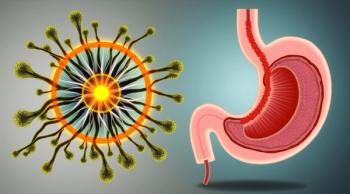
Study Finds 78 Percent Drop in Total Joint Surgey SSIs Using Antimicrobial Dressing
A new study looking at infections following joint replacement surgery finds a 78 percent decrease in joint infections when AQUACEL® Ag SURGICAL cover dressing was used.(1) The results were presented at a ConvaTec-sponsored webcast on the global impact of deadly wound infections and the need to reduce the risk to patients last week in Washington, D.C.
Â
Even as joint replacement surgery becomes more commonplace, the incidence of postoperative infection, known as periprosthetic joint infection (PJI), has frustrated doctors and patients, resulting in longer hospital stays and higher costs. The study found that the infection rate for total joint replacement patients dropped to 0.4 percent when AQUACEL® Ag SURGICAL cover dressing was used as compared to 1.8 percent when gauze dressing was used.(1)
Â
In a study published in the Journal of the American Medical Association just this week, it was noted that approximately 600,000 total knee replacement surgeries are done in the United States each year at the cost of approximately $15,000 per procedure. The authors noted that, with the volume of total knee replacements increasing over the past 20 years, the number of hospital re-admission rates and infection complications also increased.(2)
Â
These dangerous infections following knee and hip surgery can be costly to the patient, the hospital and the payor system. The increase in expenses associated with infection related to knee or hip surgery can cost $68,0003 and the postoperative hospital stay is lengthened by seven to 10 days with additional surgeries often needed.(4)
Â
Joint infection following knee or hip replacement is one of the most challenging complications we manage, not only increasing healthcare costs, but causing additional trauma and emotional challenges. AQUACEL® Ag SURGICAL cover dressing has been shown to play a vital role in reducing these risks, explains Peter F. Sharkey, MD, professor of orthopaedic surgery at Jefferson Medical College, Rothman Institute, author of the study.
The retrospective study included data collected at Riddle Memorial Hospital, part of Main Line Health in Media, Pa. and evaluated the incidence of joint infection in 1,892 patients undergoing total joint repair. Patients received either AQUACEL® Ag SURGICAL cover dressing or standard gauze dressing. Each dressing was applied to the surgical site in the operating room and kept for five days postoperatively. The decision to switch to applying the AQUACEL® Ag SURGICAL cover dressing to surgical sites was part of the multimodal approach used at Riddle Hospital.(1)Â
Â
AQUACEL® Ag SURGICAL cover dressing combines a unique Hydrofiber® Technology with skin friendly hydrocolloid technology, supported by evidence showing significant reduction in the incidence of superficial surgical site infection (SSI), skin blistering and delayed discharge compared to Mepore dressing covering AQUACEL dressing.(5,6) The unique construction provides a waterproof, viral and bacterial barrier that allows for flexibility and extensibility during body movement.
The dressing also provides on demand broad-spectrum antimicrobial activity as demonstrated in vitro.(7,8) AQUACEL® Ag dressings provide rapid and sustained antimicrobial activity, killing a broad spectrum of pathogens, including methicillin-resistant Staphylococcus aureus (MRSA) and vancomycin-resistant enterococci (VRE), within 30 minutes of exposure to the dressing,(7) for up to seven days,(8) as demonstrated in an in vitro wound model.
Â
The dressings are available in five sizes for incisions from 4cm to 27cm in length. ConvaTec is the only company to offer wound dressings with Hydrofiber® Technology that gel on contact with fluid, providing clinicians and patients with substantial wound care benefits. Used for a wide range of moderate to highly exuding chronic and acute wounds, including surgical, trauma and burn wounds, AQUACEL® and AQUACEL® Ag dressings are soft, absorbent, non-woven wound dressings available in a variety of shapes, sizes and formats, including foam. As demonstrated time and again in a number of in vitro studies, this unique gelling action enables the dressings to lock in exudate and its harmful components(7-11) and micro-contour closely to a simulated wound bed5.Â
Â
References:
1. Sharkey PF, Reducing the Incidence of PPI: A Multimodal Evidence-based Approach. Oral Presentation at: Musculoskeletal Infection Society Meeting; August 10-11, 2012; San Antonio, TX
2. Cram P, Lu X, Kates S, Singh J, Li Y, Wolf B. Total Knee Arthroplasty Volume, Utilization, and Outcomes Among Medicare Beneficiaries, 1991-2010. JAMA. 2012; 308(12):1227-1236.
3. Parvizi J, Pawasarat IM, Azzam KA, Joshi A. Periprostethic Joint Infection: The Economic Impact of Methicillin-Resistant Infections. J of Arthro. 2010:25(6 Suppl):138-144.
4. Scharzkopf R, Takemoto RC, Immerman I, Slover JD, Bosco JA. Prevalence of Staphylococcus aureus colonization in orthopaedic surgeons and their patients: a prospective cohort controlled study. J Bone Joint Surg Am. 2010 Aug 4;92(9):1815-9.
5. Jones S, Bowler PG, Walker M. A Antimicrobial Activity of Silver-Containing Dressings is Influenced by Dressing Conformability with a Wound Surface. Wounds. 2005;17(9):263-270.
6. Laboratory Test Comparison of AQUACEL® Surgical Dressing New Design and the Jubilee Method of Dressing Surgical Wounds. WHRI3264 TA180. October 7, 2009. Data on file, ConvaTec.
7. Jones SA, Bowler PG, Walker M, Parsons D. Controlling wound bioburden with a novel silver-containing Hydrofiber dressing. Wound Repair Regen. 2004; 12(3):288-294.
8. Bowler PG, Jones SA, Walker M, Parsons D. Microbicidal properties of a silver-containing hydrofiber dressing against a variety of burn wound pathogens. J Burn Care Rehabil. 2004; 25(2):192-196.
9. Waring MJ, Parsons D. Physico-chemical characterization of carboxymethylated spun cellulose fibres. Biomaterials.2001;22:903-912.
10. Walker M, Bowler PG, Cochrane CA. In vitro studies to show sequestration of matrix metalloproteinases by sliver-containing wound care products. Ostomy Wound Manag. 2007;53(9):18-25.
11. Walker M, Hobot JA, Newman GR, Bowler PG. Scanning electron microscopic examination of bacterial immobilization in a carboxymethylcellulose (Aquacel) and alginate dressings. Biomaterials. 2003;24:883-890.
Â
Newsletter
Stay prepared and protected with Infection Control Today's newsletter, delivering essential updates, best practices, and expert insights for infection preventionists.




